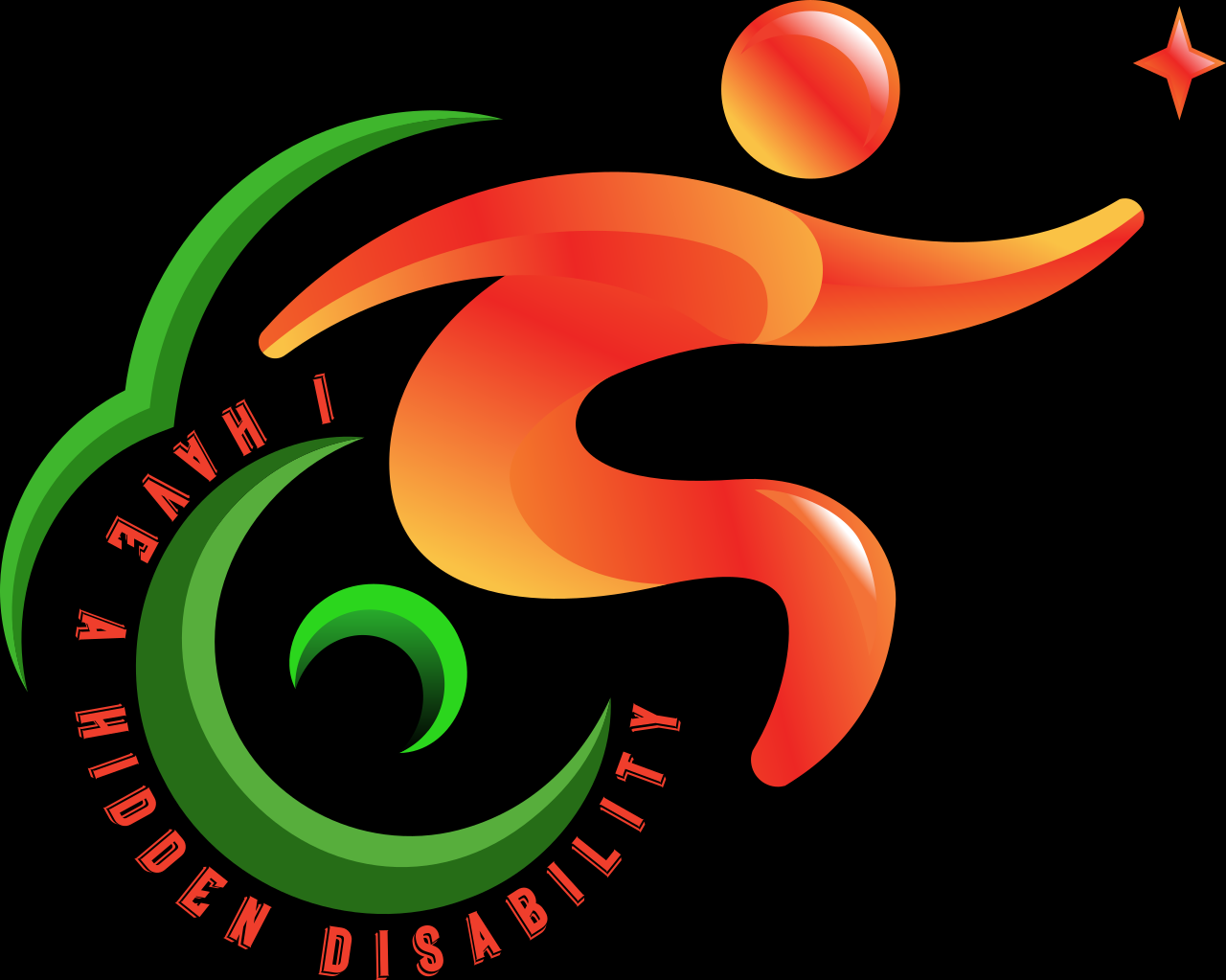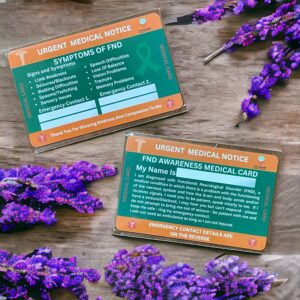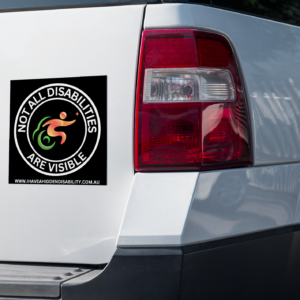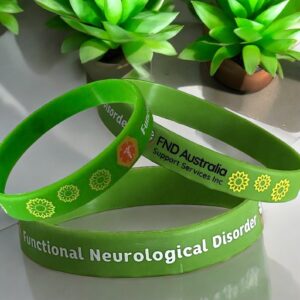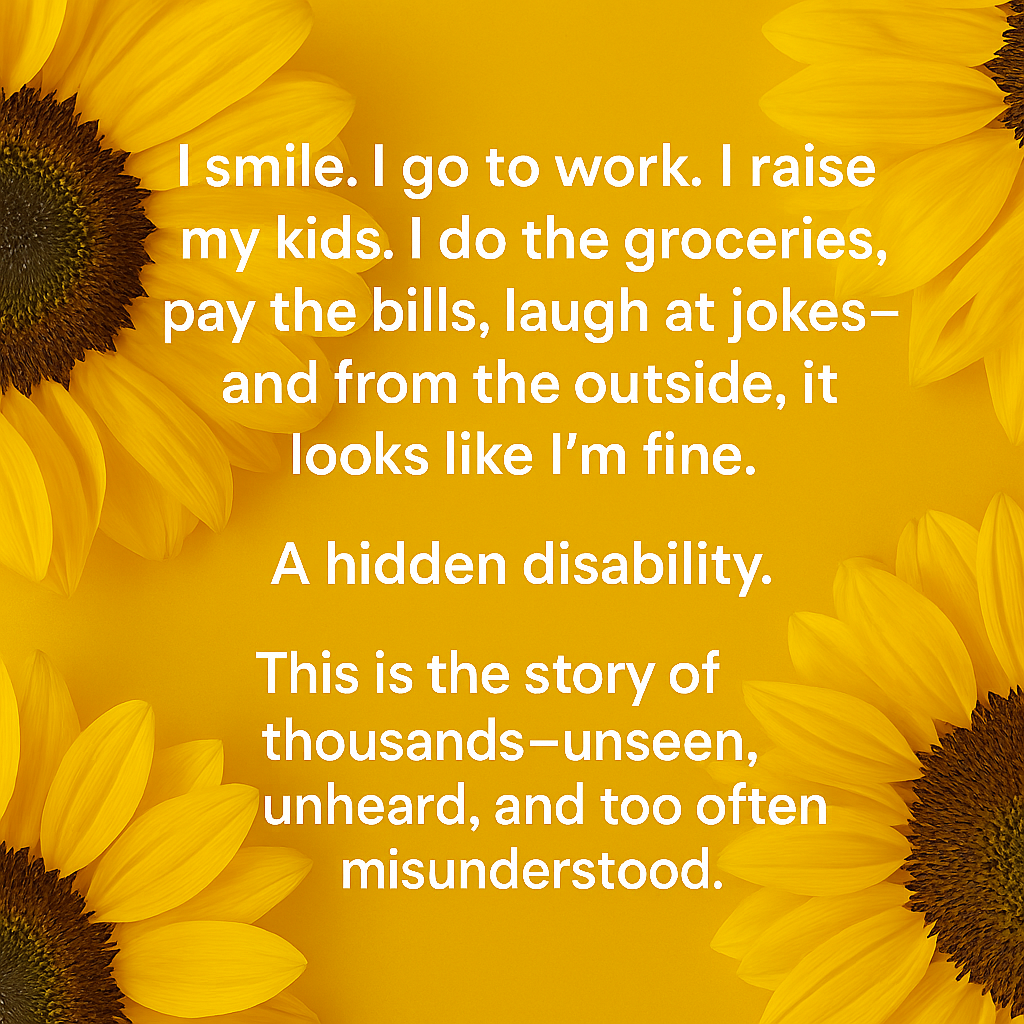
Living with a Hidden Disability: What You Don’t See, Still Hurts
You wouldn’t know by looking at me. That’s the point.
I smile. I go to work. I raise my kids. I do the groceries, pay the bills, laugh at jokes — and from the outside, it looks like I’m fine.
But every day, I carry something invisible.
A hidden disability.
This is the story of thousands — unseen, unheard, and too often misunderstood.
What is a hidden disability?
A hidden or invisible disability is any physical, mental, or neurological condition that isn’t immediately obvious to others, but can significantly impact someone’s daily life.
According to the Australian Institute of Health and Welfare, around 4.4 million Australians live with a disability — and it’s estimated that 90% of these are not visible to the naked eye.
Conditions like:
- Functional Neurological Disorder (FND)
- Chronic pain and fatigue (like fibromyalgia or ME/CFS)
- Autism and ADHD
- PTSD and other mental health conditions
- Epilepsy, diabetes, Crohn’s disease
- Traumatic brain injury
- Hearing or vision impairments
- Long COVID symptoms
These aren’t “all in your head.” They’re very real — even if you can’t see them.
Why invisibility makes it harder
People with hidden disabilities often face what’s called a “double burden.” First, there’s the condition itself — the exhaustion, confusion, sensory overwhelm, or physical pain. Then, there’s the judgment, disbelief, or dismissal from others.
We’re often told:
- “But you don’t look sick.”
- “You seemed fine yesterday.”
- “You’re just anxious.”
- “Everyone gets tired.”
These comments come from misunderstanding, not malice — but they sting just the same. They make people feel isolated, ashamed, or like they have to prove they’re struggling just to be believed.
According to research published in BMJ Open, people with invisible disabilities report significantly higher levels of stress due to stigma, including from medical professionals. In other words, not only are we battling our bodies or minds — we’re fighting to be seen and heard.
What support looks like
Support doesn’t need to be dramatic or expensive. It starts with awareness, empathy, and simply listening without judgment.
- Ask, don’t assume.
- Believe people when they say they’re struggling.
- Respect things you can’t see — from disabled parking permits to needing a break in a quiet space.
- If you’re an employer, friend, teacher, or teammate: lead with kindness and don’t dismiss what’s not visible.
Even small actions — like letting someone sit down, offering a quiet word of support, or not questioning a person’s need for accommodations — can make a huge difference.
You are not alone
If you’re reading this and you live with a hidden disability, I want you to know this:
You are not imagining it.
You are not lazy.
You are not weak.
You are navigating a world that often doesn’t see you — and you’re doing it anyway.
That takes courage.
Millions of Australians are living with hidden disabilities. Many feel like they have to hide or “push through” to be accepted. But you don’t have to do it alone. There is a growing community that understands — and we’re here to make space for your voice.
Why we created The Hidden Voice
This blog exists for people like you — people who deserve to be seen, heard, and supported.
Whether you’re living with FND, ADHD, chronic fatigue, anxiety, or any other condition that’s not visible to the outside world — this is a space for your stories. Because the more we speak up, the more others learn. And the more we connect, the less alone we all feel.
Want to show your support visibly?
Our FND Awareness shirts and ‘I Have a Hidden Disability’ tees are designed to spark conversation and spread understanding
Best selling products
-
Functional Neurological Disorder Lanyard & Corporate Medical Alert Card With Holder
Price range: $13.00 through $25.00 -
Not All Disabilities Are Visible – 6”x6” Vinyl Car Window Bumper Sticker Decal For Hidden Disability Awareness
$8.00 -
Functional Neurological Disorder Silicone Medical Alert Bracelet
Price range: $13.00 through $35.95 -
Black Lanyard & PVC ID Card Pack
Price range: $13.00 through $20.00 -
FND Messed With The Wrong Chick & Butterfly Warrior Design Unisex T-shirt
$55.00
- Hidden Disabilities Are Gaining Attention in Australia — Here’s What the Data Shows
- What Is FND? Understanding Functional Neurological Disorder in Everyday Life
- What Are FND Attacks? Understanding Functional Seizures
- Blog Post: Men’s Mental Health Awareness: Why It Matters More Than Ever
- What Does FND Mean? Understanding the Rising Interest in Functional Neurological Disorder
